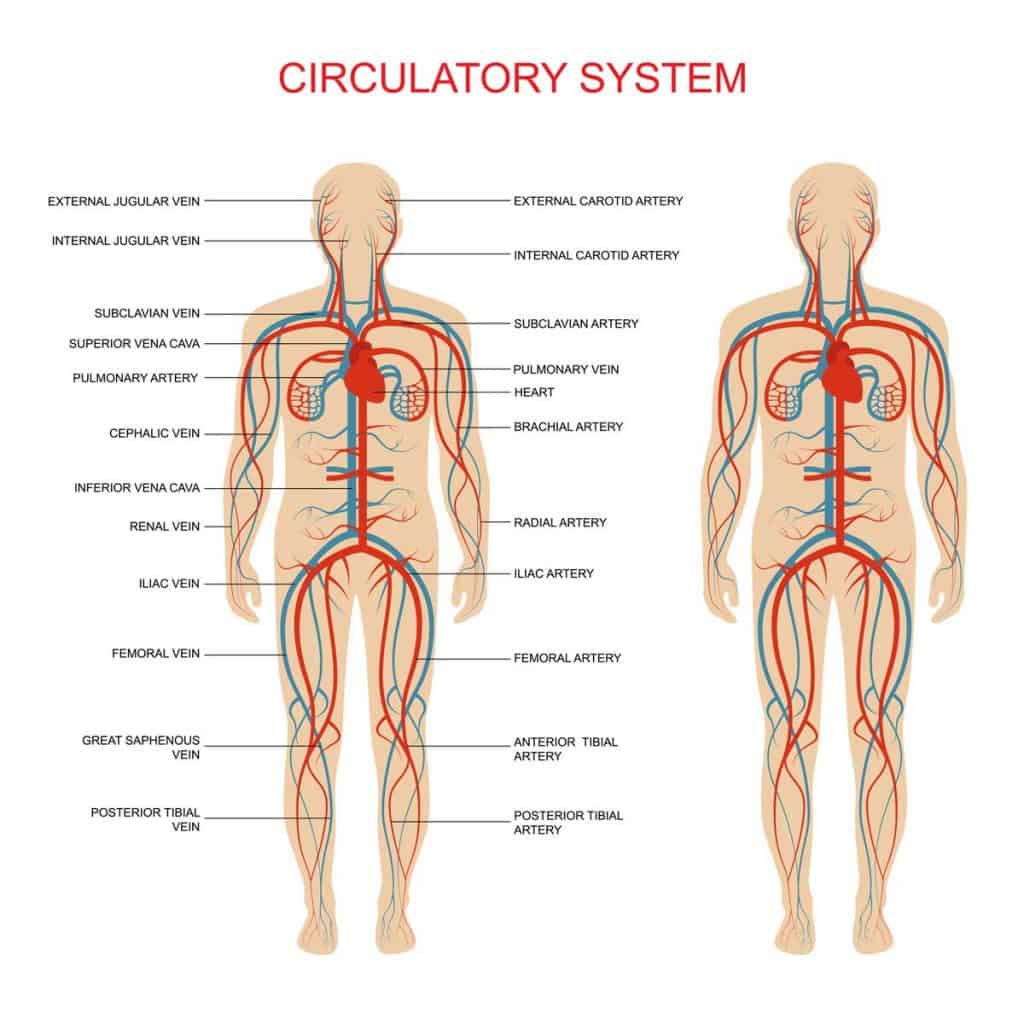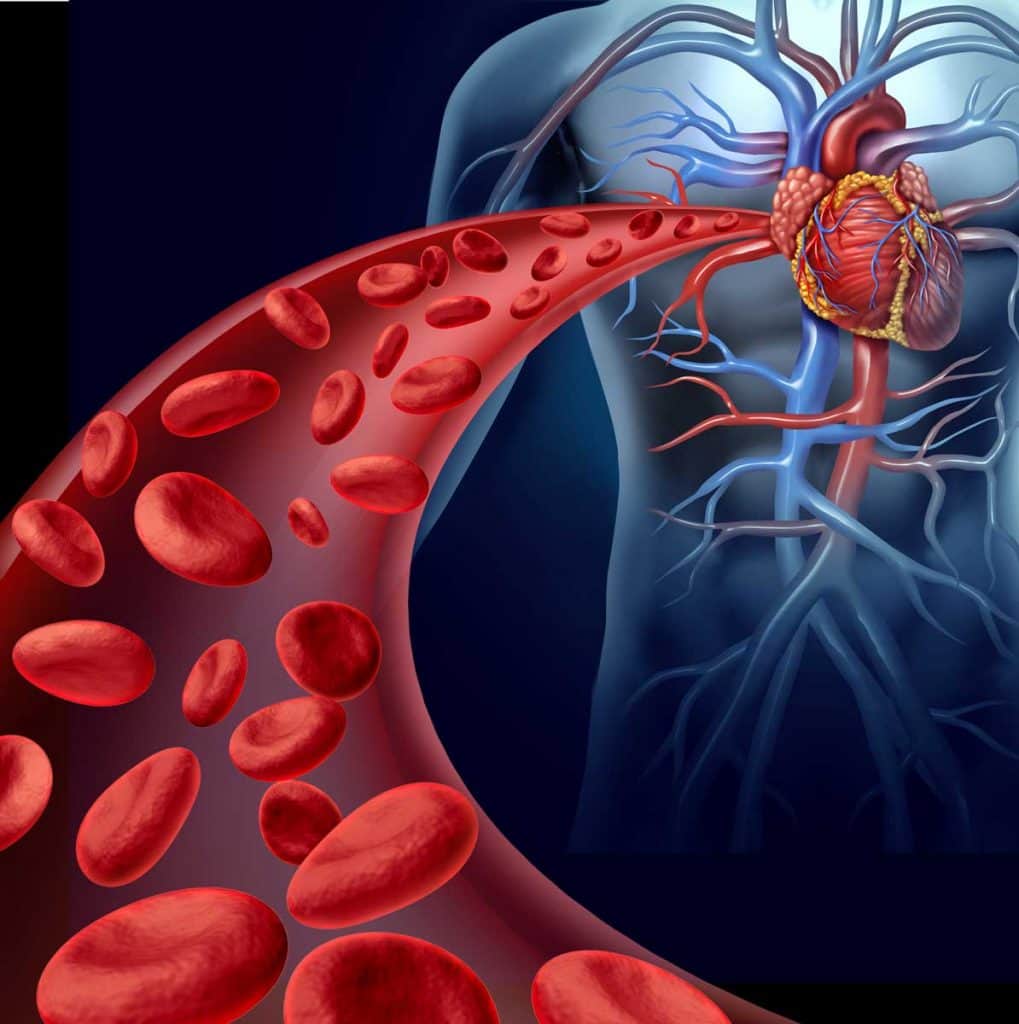
Having a good night’s sleep is important, but how to improve poor circulation to prevent that uneasiness at night? Doctors recommend getting 7 to 8 hours of sleep to maintain good overall health. But, it’s hard to have quality sleep if you already have pre-existing conditions that disrupt it.
This uneasiness can be triggered due to poor circulation that can affect cardiovascular health. We’re talking about sleep apnea, obesity, and even atherosclerosis (clogging of arteries) at night.
It’s a two-way street as quality sleep can improve circulation, and with the latter provides better rest at night. Here’s what we know on how to improve circulation and get better sleep at night.

Your body’s circulation system and how it works
The circulation system regulates the flow of oxygen, blood, and nutrients in your body. When its function is reduced, you may experience common symptoms such as tingling, numbing, and restlessness. Poor circulation happens due to underlying causes such as diabetes, heart disease, or obesity.
But, how does our circulatory system work?
Our circulatory system is composed of blood vessels that carry blood, oxygen, nutrients to the different parts of the body. Likewise, it carries toxins and body wastes to be removed through the excretory system.
The most important part of the body – the heart
Whenever the heart pumps and beats, it sends the blood flowing through the body. That being said, it carries the nutrients and oxygen with it. After delivering these essentials, the blood flows back to the heart. The heart would send blood to the lungs to breathe in more oxygen.
Parts of the heart
The two bottom chambers (left and right ventricles) are responsible for pumping the blood out of the heart. Meanwhile, the top chambers (left and right atrium) receive the blood from entering the heart.
The ventricle and atria chambers are separated by four valves.
- Tricuspid valve. Separates the right ventricle from the right atrium.
- Mitral valve. Separates the left ventricle from the left atrium.
- Pulmonic valve. Separates the right ventricle and pulmonary artery, which is responsible for carrying the blood to the lungs to take more oxygen
- Aortic valve. Separates the left ventricle from the aorta, which is responsible for carrying the blood, oxygen, and nutrients to the body.
What about the circulatory system?
There are different pathways from the heart, lungs, and different parts of the body. The pulmonary circulation involves blood flowing to the heart and lungs and back again. Meanwhile, the systematic circulation delivers the blood, oxygen, and nutrients to the different parts of the body through the aortas.
Relationship of sleep and body circulation
As you see fit, the heart, body circulation, and sleep can affect one another. According to a study, people who sleep less than 7 hours every night have 40% to 60% lower microRNAs. So, what are those?
MicroRNAs are small ribonucleic acids that improve, regulate, and fine-tune the gene profile. They influence cell expression through the blood flow. Thus, we can see how these are all pieced up together for blood vessel development, blood circulation, and sleep impairment.
Poor sleep can lower microRNAs which suppress pro-inflammatory proteins necessary for the health of our cells. It can lead to poor circulation which heightens the risk for more conditions like cardiovascular diseases, stroke, or inflammation.
What’s more, sleep loss affects our endothelium – a thin layer of single cells the interior surface of blood and lymphatic vessels. When blood vessels are unable to dilate, blood, oxygen, and nutrients can’t flow efficiently in our bodies. Once it can’t function properly, poor circulation happens and the risk of heart diseases occurs.

Causes of poor body circulation
There are several causes for poor body circulation. It can be due to lifestyle, genetic, or environmental factors. Among them are:
Obesity
Having extra fats in the body burdens your blood vessels and might cause blood clots which result in poor circulation. Being overweight is no joke and having low daily activities can cause problems. Other than circulation problems, obesity will also cause diabetes, sleep apnea, body pain, sleeping hot, and more.
Diabetes
Too much sugar can mess up your heart problems, as well as, increasing the chance of being obese. People with diabetes might have elevated blood pressure, stroke, heart disease, or neuropathy. Heart problems will cause poor circulation which can lead to cramping, pain, and numbing feeling.
Blood clots
Blood clots in the arms and legs can result in circulation issues. They’re usually triggered by an injury or an inside blood vessel wound. When clots are formed, they travel to other parts of the body and can cause issues like pulmonary embolism, stroke, and cardiac arrest.
Peripheral artery disease
Peripheral artery disease is a condition where your blood vessels and arteries become narrower. Sometimes, the arteries stiffen and plaque begins to build up and decreases blood flow. The poor circulation causes pain and extremities in nerve and tissue damage.
Varicose veins
These are spider-looking veins caused by valve failure/damage. They’re most often found on the back of the legs in most women and overweight persons. With damaged veins, blood can’t easily flow poor circulation may become a problem. In uncommon circumstances, it can cause blood clots.
Pre-existing medical conditions
Those with pre-existing medical conditions like heart disease can cause issues with circulation. Another condition called Raynaud’s Disease causes the arteries in your hands and toes to narrow. This in turn causes poor circulation and chronic hands and feet condition.
Symptoms of poor circulation
People with poor circulation experience the following symptoms:
- Numbness
- Tingling sensation
- Throbbing or stinging pain
- Pain and muscle cramps
- Chest pain
Other symptoms may include loss of peripheral vision, headaches, and etc.

How to treat poor circulation
People who are living ‘passively’ are at risk of developing poor circulation. Without treating our lifestyle, genetic factors, and medical conditions, the chances for poor circulation is high. So, how to treat or maintain this illness?
Exercise regularly
To sleep well at night, we need to feel tired and exercise is the best way to get tired. However, it does not mean that you should work out right before bed. Consider exercising during the evening or early in the morning. It will provide you with the energy to get you through the day and you will feel sleepy at night.
Exercise gets your knots loosened and allows better blood flow in the body. Getting your heart the pump it needs is a good way to improve body circulation. What’s more, exercise has tons of benefits such as weight loss, better sleep, and boosts mood.
Practice good sleeping habits
You can practice good sleeping habits by doing any of the following:
1. Stick to a regular sleep-wake schedule
2. Invest in good pillows and mattresses
3. Lower the lights when you’re about to sleep
4. Put down electronics 30 minutes before sleeping
5. Practice bedtime routine like reading, listening to music, or drinking hot milk
6. Prop a pillow on your lower back or legs to support you
Purchase quality bed products
If you want to be more comfortable at night, why not invest in quality products at Solace Sleep for a good night’s rest. We have a collection of mattresses, bed frames, and adjustable beds that will improve sleep quality and lowering some complications brought by diabetes.
An adjustable bed will do wonderfully to promote body circulation. You can fine-tune the lower half of the bed to elevate the feet. This reduces pooling since blood flow returns to the heart (due to gravity), thus reducing the strain also.



